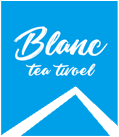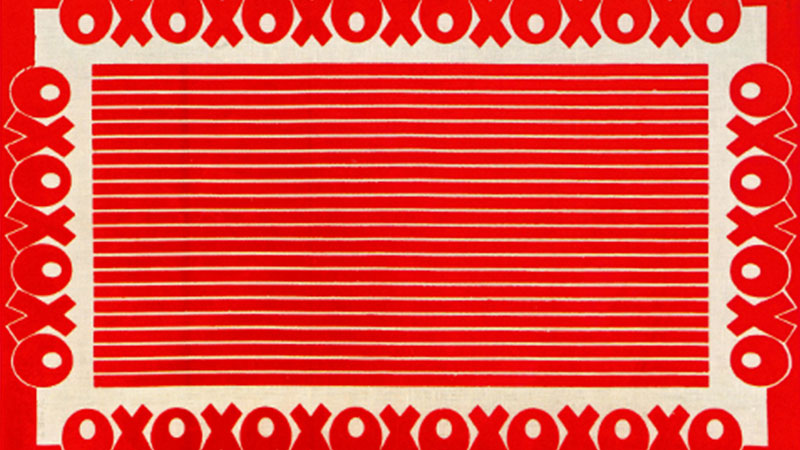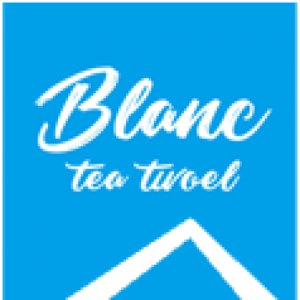‘An old vintage dress fabric inspired my first ironing-board cover-the idea proved so popular that many more vintage-Style items, ranging from tablecloths and seat cushions to tea towels, followed.’
CATH KIDSTON, DESIGNER AND BUSINESSWOMAN
THE MINIMALIST 1990s was a period when essentials were laid bare, particularly in the kitchen where design reverted to the 1930s ideal of being a laboratory-like space, although for many there was a continuance of the country weekend, ‘Sloane Ranger’ eclecticism of architectural salvage, early oak and vintage treen. The pared-back ethos was perceived as emblematic of a 1990s urban lifestyle, and timeless but abundant kitchen linens of sober integrity and modesty were now required, perhaps with a faint recollection of Gallic cuisine. Rubber floors, hi-tech appliances(hidden behind doors without handles), and white tiles in a half-drop brick-bond repeat, resulted in the antithesis of the aspirational grandeur of the previous decade, and provided a template for the fashionable kitchen. The vogue for open, loft-style living space and industrial chic produced bare brick walls and polished copper pipes. This pragmatism was furthered by the adoption of rational kitchen linens, emblazoned solely with jacquard text stripes declaiming work functions- ‘glass cloth’ or ‘dish cloth’.
Graphic design became the ruling aesthetic as distinctive packaging provided the only colour amidst the polished concrete, limestone and stainless steel. Exuberant pattern almost disappeared in the modern domestic interior to be replaced by monochrome texture and sophisticated pared-down prints.
The long lines and clear spaces of the minimalist interior were challenged by the notion of ‘modern vintage’, purveyed by designer and entrepreneur Cath Kidston, who opened her first shop in London’s Holland Park in 1993. Offering a compelling and commercially successful version of ‘below stairs’ rather than the aristocratic ‘above stairs’ so prevalent in the 1980s, Kidston’s
esthetic was one of charming nostalgia for the domestic life of the country house and the kitchen realm of the 1950s housewife. Kidston spearheaded the obsession with vintage style by renovating ‘junk’ furniture with bright gloss paint, 1950s-inspired polka dots and faded florals, gingham tablecloths and red ricrac braided aprons, providing a comforting and cosy aesthetic for a generation of women who preferred to idealize rather than practise domesticity. One of Kidston’s first designs was an ironing-board cover with a distinctive floral print, epitomizing the Cath Kidston look.
Designer and entrepreneur Emma Bridgewater’s distinctive spongeware pottery is an evocation of this kinder and cosier interior, one evoking her mother’s kitchen, informal and hospitable. She began to make pottery in 1984, having had an epiphany in her search for a pair of cups and saucers for her mother’s birthday. As she writes in her memoir, ‘I went to one of those old-fashioned china shops there used to be lots of, in search of cosy shapes and colourful patterns… But none of the china bore any relation to the feeling of Mum’s kitchen. Every day she mixed old things from markets, or china out of Granny’s cupboard, with things bought on holiday abroad, big chipped Deruta mugs, Masons’ Brown Quails and plates from Habitat with pink rims.’
English earthenware, particularly Staffordshire, proved the touchstone, and the company Emma Bridgewater formed flourished as she combined traditional ways of crafting pottery with the decorative technique of applying simpl patterns with a cut sponge. Subsequently many designs were also adapted for application onto a growing range of other products, including glass, cake tins, picnicware, wallpaper and tea towels.
In 1995 ulster Weaving Homewares was awarded the Royal Warrant as suppliers of kitchen textiles for Queen Elizabeth ll. Based in Holywood, between Bangor and Belfast in Northern Ireland, the ulster Weaving Company was originally founded in 1880, and throughout the late 19th and early 20th century it continued to spin, weave, bleach and finish the high-quality linen for which Ireland, and Ulster in particular, are famous. The first kitchen textiles appeared in the 1960s, and since then the company has been at the forefront of tea-towel production and design. The company is particularly renowned for tea towels commemorating royal events. As current designer for the company Jennie Harvey says, ’…working on something which involves our Royal Family is a tremendous privilege. The commemorative tea towels have to have a classic feel as fans of the Royal Family are quite traditional, but I like to offset this with a contemporary look, as well as injecting some of my own creativity. I go through the archives of work we have done previously for the Royal Family and take inspiration from some of that.’
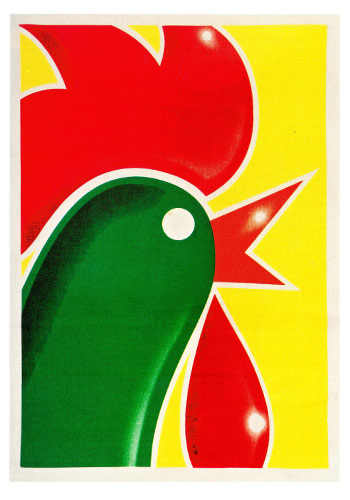
In 1957 Rena Ames Harding hatched the original flat graphic illustration of a colourful Well summer rooster After several reincarnations, Cornelius Rooster™, or Corny™, gained airbrushed 3D realism in the ’70s and persisted as tea-towel merchandise into the 1990s.
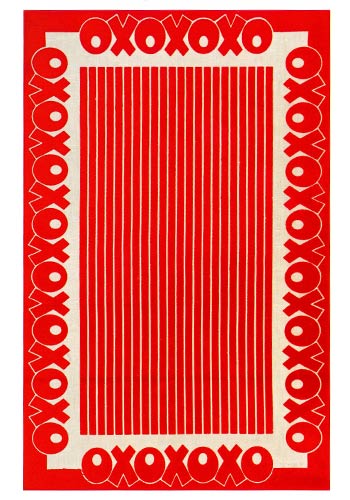
Though little more than a basic condiment, Oxo has been perennially a stalwart contributor to the revenue streams of advertising agencies. In this promotional tea towel, the palindromic brand name lends itself to a border surrounding an illusory kitchen apron.
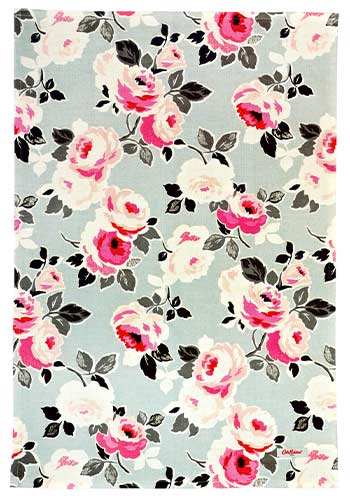
Quintessentially Kidston, Paper Rose features naturalistic sprays of roses in subtle shades of peach in a half-drop repeat pattern on a grey ground.
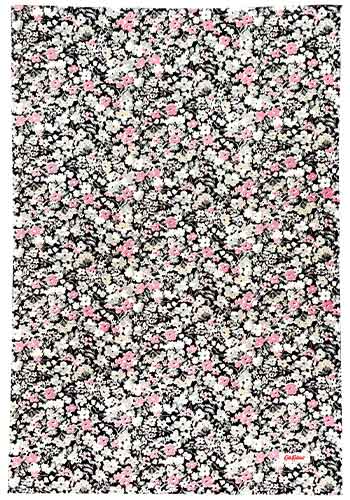
This small overall multi-directional print is designed to complement the large-scale。
Paper Rose pattern opposite, the tea towels to be sold as a pair.
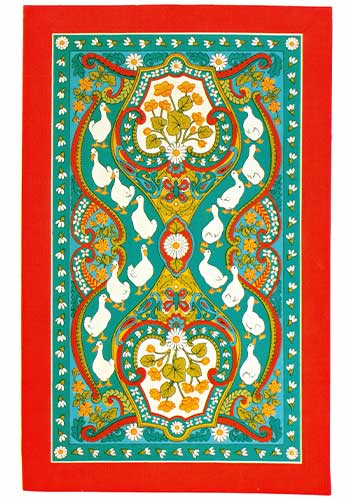
Ulster Weavers employs an ogee mirror repeat system to accommodate parading gaggles of geese. Constrained within a border of tumbling daisies are elements found in traditional paisley patterns.
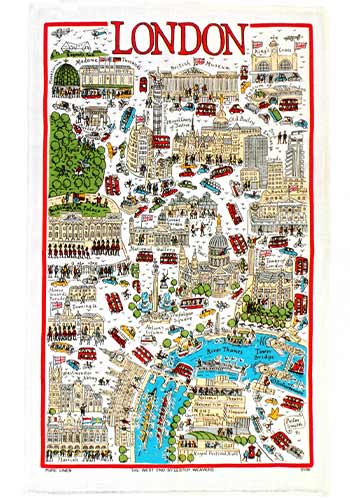
An overview of London’s West End by Ulster Weavers. Maps are an obvious choice of purchase, both as a useful guide to the area and as a souvenir of a trip capital or other city.
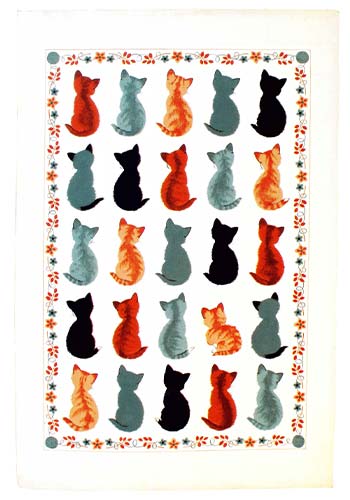
Preparatory artwork for Kittens produced by Ulster Weavers. Versions are still in production: Kittens Arrived and Cat’s in Waiting, alongside Cat’s Arrived Here, interest is provided by the single crouching kitten.
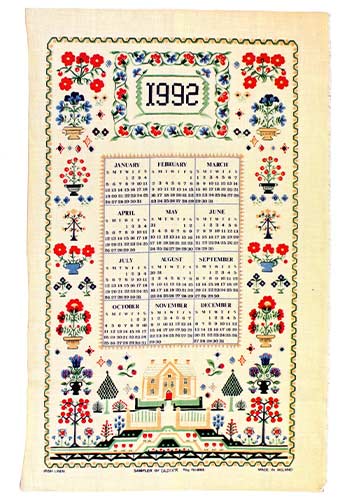
Ulster Weavers evokes the simplicity of the embroidered sampler in the format of a calendar. Historically, the spot motifs, stylized flowers and border patterns of a sample would subsequently be put to use in the decoration of clothes and domestic furnishings.
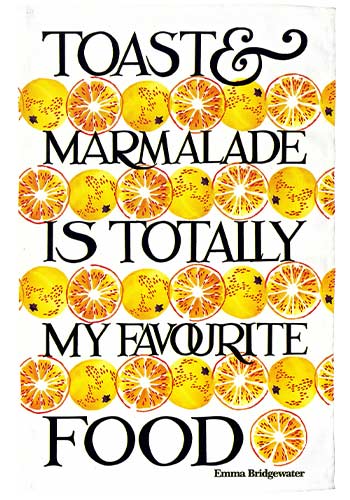
Toast Marmalade, a signature design by Emma Bridgewater with distinctive font, was first introduced into the textile range in 1994, although this version is from 2013.
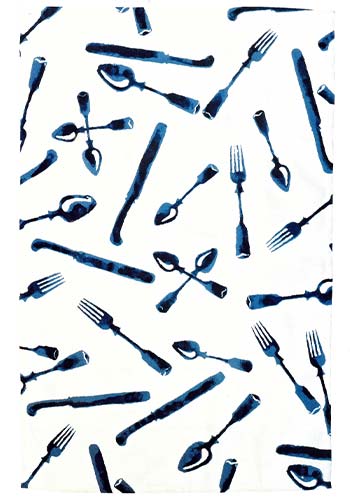
Knives Forks, from 1995 is a monochrome multi-directional design by Emma Bridgewater featuring carefully placed cutlery. The knives, forks and spoons are allowed to bleed off the edge of the tea towel, creating a free-floating pattern.
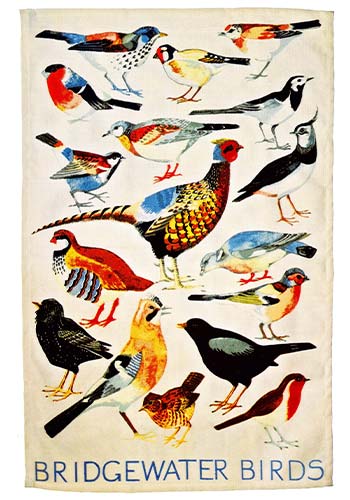
Bridgewater Birds from 2004 favors the watercolour depiction of British avian species. With a casual disregard for scale, this twitchers’ guide is bereft of text- and consequently enigmatic to all but the plover lover and wagtail watcher.
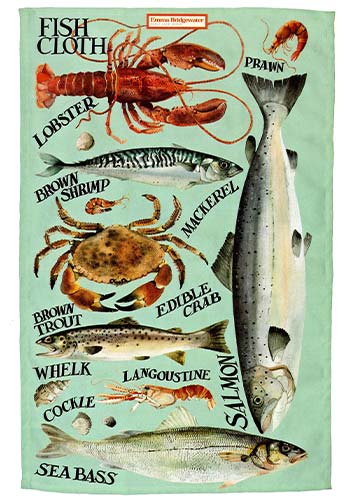
An illustrated tea towel doubling as a shopping guide to culinary fish and seafood, rendered with forensic watercolour detail by Matthew Rice for Emma Bridgewater in 2016.
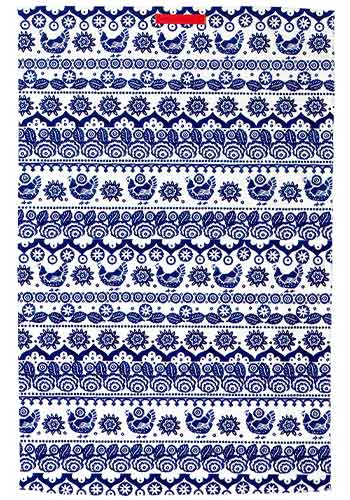
Designed in 2014, Emma Bridgewater’s Blue Hen& Border features strong horizontal rows of textured pattern in ribbon repeat, interspersed with marching hens. Blue and white is a perpetual kitchen favorite.
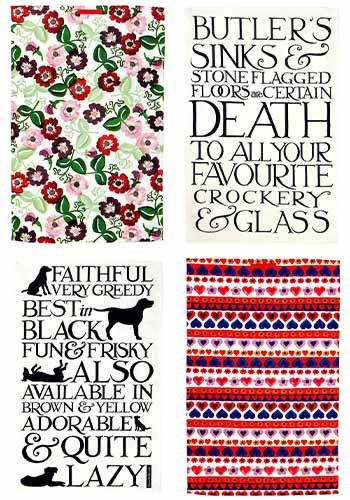
Zinnias(top left) replicates the sponge-ware effect of the matching Bridgewater ceramics, while Butler’s Sinks(top right) and Black Lab(bottom left)deploy the distinctive font. The bold patterns of fashion label Dollyrockers inspired Hearts and Flowers(bottom right).
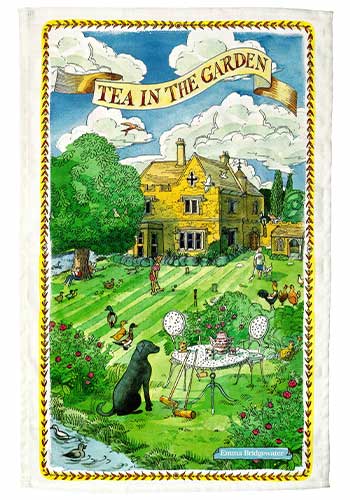
An exercise in nostalgia, an idyllic summer’s afternoon is conjured up in Tea in the Garden with croquet on the lawn, the duck pond, shady trees beneath a sunny sky, and a table set for tea(with Emma Bridgewater crockery).
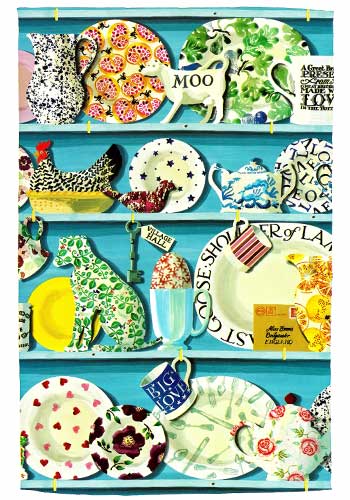
For Emma Bridgewater, arranging a patchwork of pottery on a kitchen dresser is a source of delight. Here the tea towel showcases various examples of the designer’s informally arranged china.
《the art of the tea towel》
Marnie Fogg
